Violets "Goddess of Beauty": a description of the variety, planting and care features
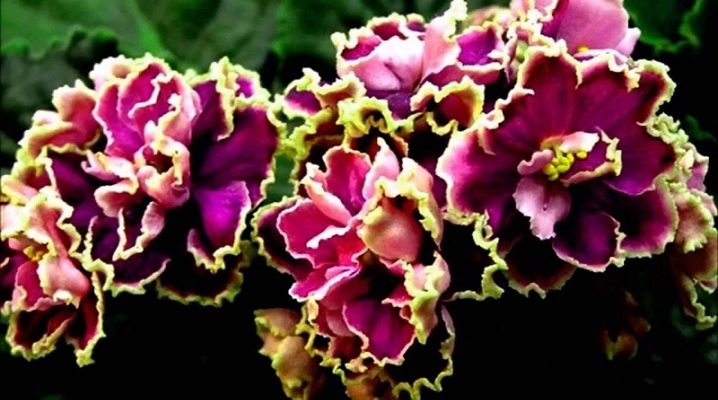
The violet "Goddess of Beauty" appeared on the windowsills of plant breeders thanks to the breeder E. Korshunova. Although it does not smell, it pleases with a very bright coloring and double flowers.
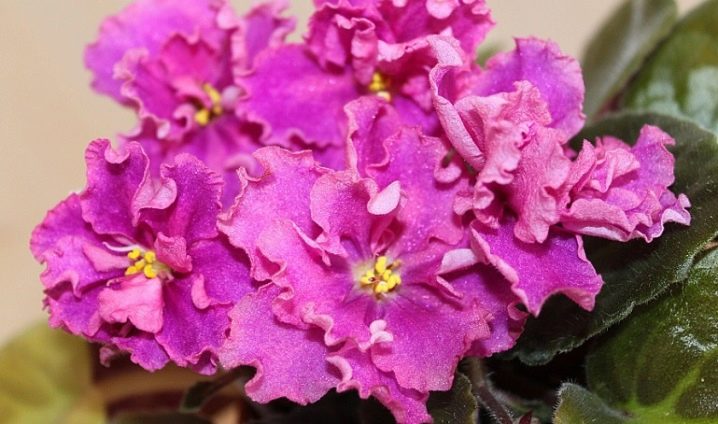
Description of the variety
Before proceeding with the description of the "Goddess of Beauty", it should be noted that the name "violet" is not entirely correct, since this plant is a saintpaulia. However, since most of us are familiar with the word "violet" from childhood, henceforth we will call this variety.
This plant does not show monochromatic flowers, you can see a slight purple dusting on them. Each bud reaches seven centimeters in diameter, which is quite impressive for a room violet. The stars have a wavy edge, very voluminous, from the side it seems that they are even made of wax.
Peduncles are formed long, but thin, so they fall under the weight of numerous inflorescences. Each inflorescence has five buds. The plant blooms for a long time, but it is not easy to achieve this from it, since Saintpaulia is very capricious in this regard. As a rule, flowers can be observed in winter or late autumn, but on condition that the breeder manages to provide the bush with plenty of light.
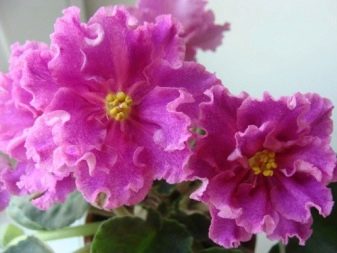
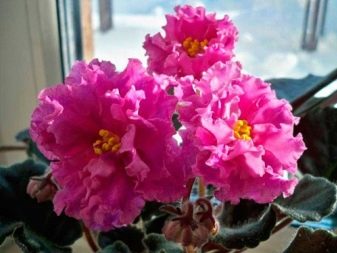
Growing features
When choosing a plant of this type, it should be borne in mind that violets require good and regular care. How to properly implement it, we will consider below.

Priming
The violet should always be planted in soil that drains well, drains and allows oxygen to pass through. Specially developed primer can be found easily in most garden centers. If you want to create your own compost, you should use a mixture with a high content of humus or organic material. Professionals advise taking one part of peat moss, sand and loam.
It is important not to plant the violet in an oversized container. It does not have a bulky root system, and a large pot contains a lot of soil that will stay moist for a long time. Since the plant cannot use all the water, it will simply rot.
Violets "EK-Goddess of Beauty" need to be repotted regularly when they outgrow their pot. The plant requires fresh soil every two years, only in this way the root system remains healthy.
Plus, replacing old compost helps in getting rid of accumulated salts and other chemicals from hard water.
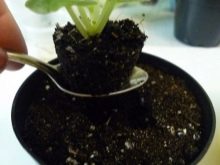
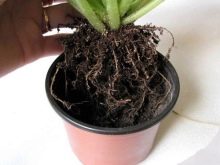

Watering and humidity
A novice grower needs to be careful when watering, it is better to use a watering can with a long spout. Leaves and stems must remain dry or rot may develop. Once a month, it is worth using top watering, all moisture that has got on the leaves is removed with a paper towel. The rest of the time, the plant can feed on water through an installed container with small pebbles or a wick. So the violet will take as much moisture as it needs, while the soil will remain moderately dry.
Plants are always watered with water at room temperature. Water that is too cold or too hot will damage the roots. As a result, the leaves curl when moisture is absorbed by the root system. Cold water can also cause leaf spot if overhead watering is applied. Soft water is never used as it increases the salt content of the soil, which negatively affects the plant's ability to absorb water and nutrients.
These beautiful plants will not be happy if the air is too dry. Moisture is very important for keeping their leaves healthy. You can put an automatic humidifier or just trays of pebbles and water. At the same time, it is important to provide for good air circulation. On average, the humidity parameter should be around 80%.
Alternatively, you can regularly spray the saintpaulias with warm, settled water.
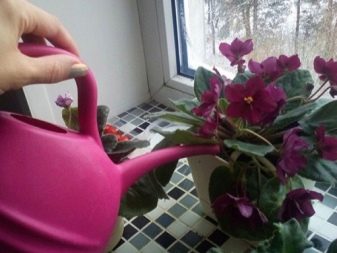
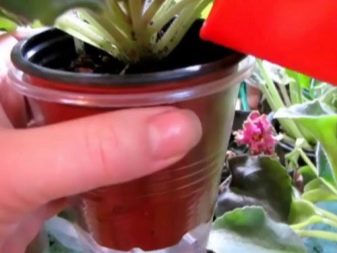
Light and temperature
Violets need a lot of bright indirect light so they can grow healthy and bloom profusely. The most common reason for the lack of flowering is insufficiently bright light, this problem has to be faced, even if the flower is on the window.
The morning sun is very beneficial but during the day its direct rays can burn the foliage, so it is worth putting the pot on the south side, but behind a light curtain. During the winter months with short, cloudy days, it is best to use an alternative source - fluorescent lamps. Violets need 12 to 16 hours of light and 8 hours of darkness to grow and bloom.
Thin and dark green leaves with very long and weak stems are a sign of too low light. South or west windows provide better lighting in winter. In the warm season, it is better to use window sills from the east or north side. Violets love temperatures between 20 and 24 degrees Celsius.
If the numbers are lower, they do not grow or bloom.
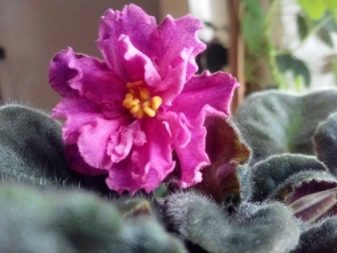
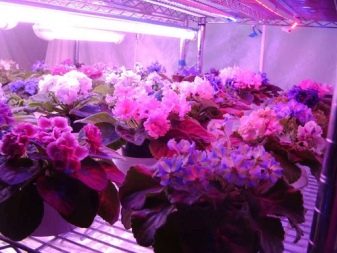
Transplant and fertilization
To feed the plant, it is better to apply fertilizer along with watering, while using a mixture with a high phosphorus content. The dose should be four times less than on the package, since the violets are fertilized every two weeks during the growing season, and feeding is stopped in the sleep phase.
Dry fertilizer should always be applied to the soil surface, and watering after top dressing must be superficial, after which you can return to the usual method. Violets will bloom more often if the grower feeds them regularly. You can use a 20: 20: 20 top dressing, but only half of the suggested dosage.
For transplanting, the soil should be loose, consisting of one third of good garden soil, perhaps loam, one third of sand and one third of peat moss. A teaspoon of bone meal is added to this mixture for every kilogram of soil. Moreover, the compost is made slightly acidic, around pH 6.5.
For the beginner and inexperienced gardener, it is advisable to use a ready-made organic mixture that can be bought on the market.
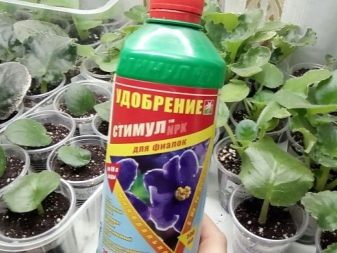
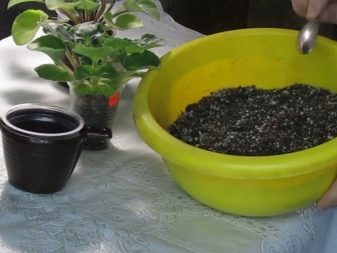
Reproduction
Spring is the ideal time for violet leaves to propagate. The step-by-step process is as follows.
- With a clean knife or blade, cut off a few leaves from the third row from the outlet.
- Cut the stem of the leaf by about 0.5 centimeters and put it in a glass with vermiculite. Thus, several shoots can be rooted in a large pot at once.
- When the leaves are set in the vermiculite, add water to keep the mixture moist. After a few weeks, the roots will appear, but it is too early to transplant, it is worth waiting until four leaves are formed.
- The seedlings are transplanted into a pot with a standard violet mixture and fertilized. After a year, the container is changed to a larger one.
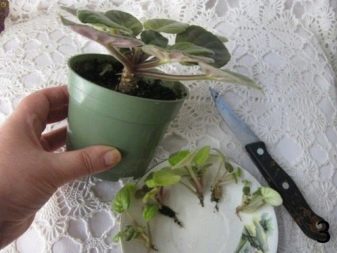
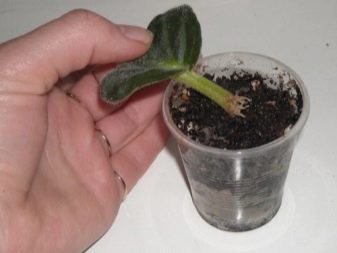
Diseases and pests
Violets "Goddess of Beauty" are prone to pests such as mealybugs, thrips, cyclamen mites, aphids. When a plant is affected by insects, it must be treated with insecticides immediately. It is best to use organic products, of which the most popular are alcohol and soap solution, and a decoction of onion husks. Neem oil (margose) helps a lot.
Fungicides - a remedy for powdery mildew, rust, root and any other rot. They do an excellent job with the task.As for the bacterial infections that lead novice growers to a dead end, everything is simple here, it is almost impossible to fight them, since no effective treatment for most diseases has yet been created.
The only sure step a florist must take is to dispose of the infected plant.
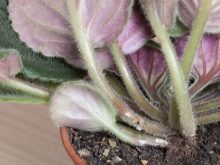

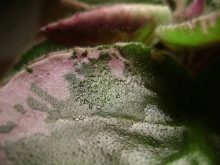
You can find out how to water violets in winter below.































The comment was sent successfully.